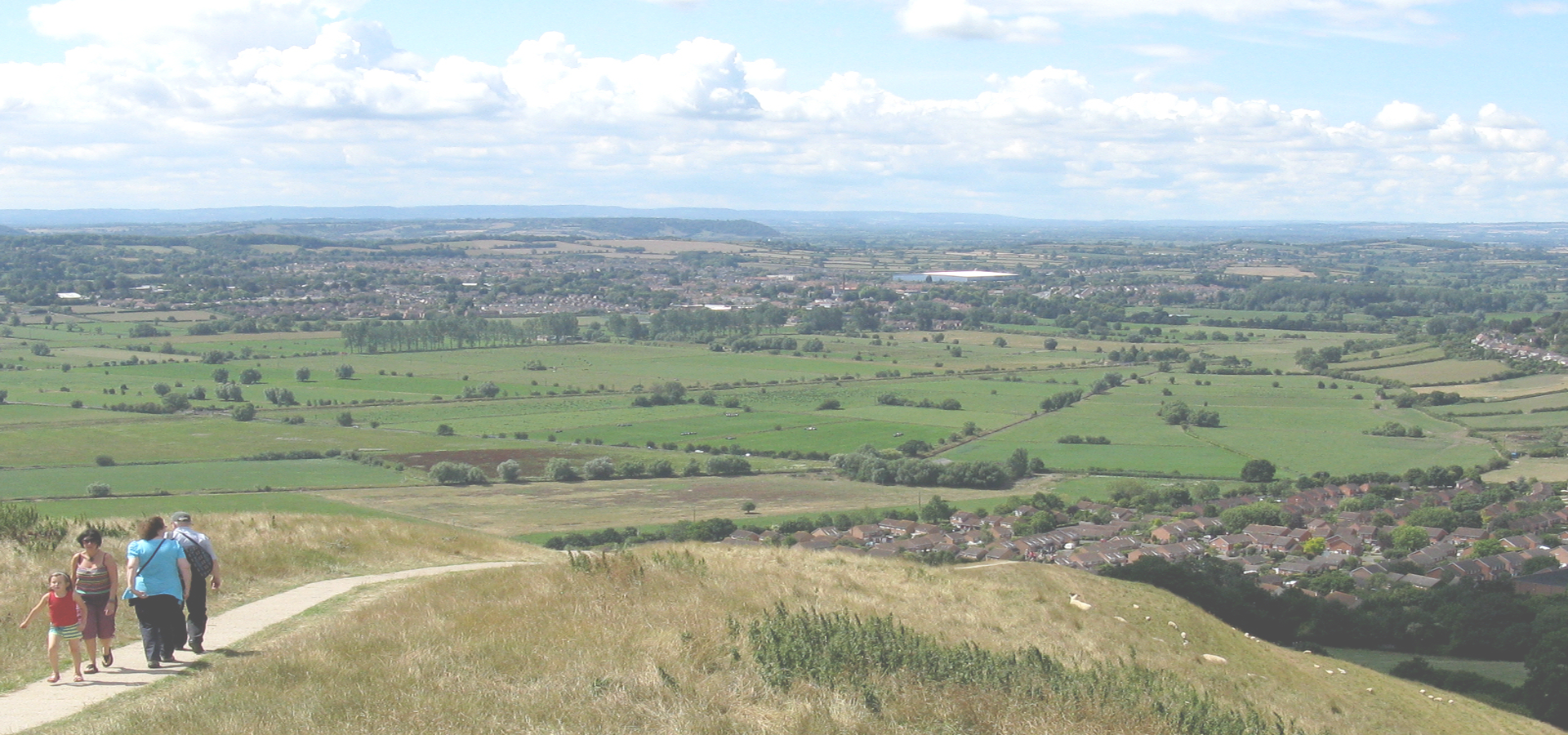🏴 Architect Edmund Livingstone Wratten is associated with Street. He was elected an Fellow of the Royal Institute of British Architects (FRIBA) in 1925.
Street, Somerset, England, United Kingdom
🏴 Street is a large village and civil parish in the county of Somerset, England. It is situated on a dry spot in the Somerset Levels, at the end of the Polden Hills, 2 miles (3.2 km) south-west of 🇬🇧 Glastonbury. There is evidence of Roman occupation. Much of the history of the village is dominated by Glastonbury Abbey until the Dissolution of the Monasteries, and a 12th century causeway from Glastonbury was built to transport local Blue Lias stone from what is now Street to rebuild the Abbey. In Roman times Street was close to the route of the Fosse Way and is now on the route of the modern A39 road which runs from Bath to Cornwall, and the A361.
The Society of Friends had become established there by the mid 17th century. One Quaker family, the Clarks, started a business in sheepskin rugs, woollen slippers and, later, boots and shoes. This became C&J Clark which still has its headquarters in Street. Redundant factory buildings were converted to form Clarks Village, the first purpose-built factory outlet in the United Kingdom. The Shoe Museum provides information about the history of Clarks and footwear manufacture in general.
The Clark family's former mansion and its estate at the edge of the village are now owned by Millfield School, an independent co-educational boarding school. Street is also home to Crispin School and Strode College.
To the north of Street is the River Brue, which marks the boundary with Glastonbury. South of Street are the Walton and Ivythorn Hills and East Polden Grasslands biological Sites of Special Scientific Interest. Street has two public swimming pools, one indoor which is part of the Strode complex, and the outdoor lido, Greenbank. Strode Theatre provides a venue for films, exhibitions and live performances. The Anglican Parish Church of The Holy Trinity dates from the 14th century and has been designated by English Heritage as a Grade I listed building.
Street, Somerset, England, United Kingdom

Street has a population of over 11,805 people. Street also forms part of the wider Mendip district which has a population of over 112,500 people. Street is situated near Shepton Mallet.
Twin Towns - Sister Cities Street has links with:
🇩🇪 Isny im Allgäu, Germany🏴 Bridgwater 51.128
🏴 East Grinstead 51.13
🏴 Tunbridge Wells 51.133
🏴 Shrewsbury -2.751
Locations Near: Street -2.7556,51.1243
🏴 Shepton Mallet -2.547,51.19 d: 16.2
🏴 Yeovil -2.634,50.941 d: 22.1
🏴 Bridgwater -2.993,51.128 d: 16.6
🏴 Weston-super-Mare -2.978,51.348 d: 29.3
🏴 Taunton -3.1,51.019 d: 26.8
🏴 Bristol -2.583,51.45 d: 38.1
🏴 Kingswood -2.512,51.46 d: 41
🏴 Frome -2.322,51.228 d: 32.4
🏴 Bath -2.361,51.385 d: 39.9
🏴 Dorchester -2.437,50.715 d: 50.7
Antipodal to: Street 177.244,-51.124
🇳🇿 Dunedin 170.474,-45.884 d: 19248.7
🇳🇿 Christchurch 172.617,-43.517 d: 19100.5
🇳🇿 Canterbury 171.58,-43.543 d: 19070.9
🇳🇿 Invercargill 168.373,-46.413 d: 19181.1
🇳🇿 Wellington 174.767,-41.283 d: 18904.5
🇳🇿 Hutt 174.917,-41.217 d: 18899.1
🇳🇿 Lower Hutt 174.917,-41.217 d: 18899.1
🇳🇿 Upper Hutt 175.05,-41.133 d: 18891.5